কলিকাতা শোনে না কো চলার খেয়ালে;
নৃত্যের নেশা তার স্তম্ভে দেয়ালে।
(Kolkata does not listen as she prances along at her own pace;
Dancing in a trance through her buildings and walls.)
Kolkata, formerly known as Calcutta, is a city that embodies the rich history and cultural heritage of India. From its inception as a small village to becoming the capital of British India, Kolkata has experienced both glorious heights and challenging lows. This blog delves into the historical journey of Kolkata, exploring its rise as a center of intellectual and cultural enlightenment during the pre-independence era and where it stands in the post-independence years.
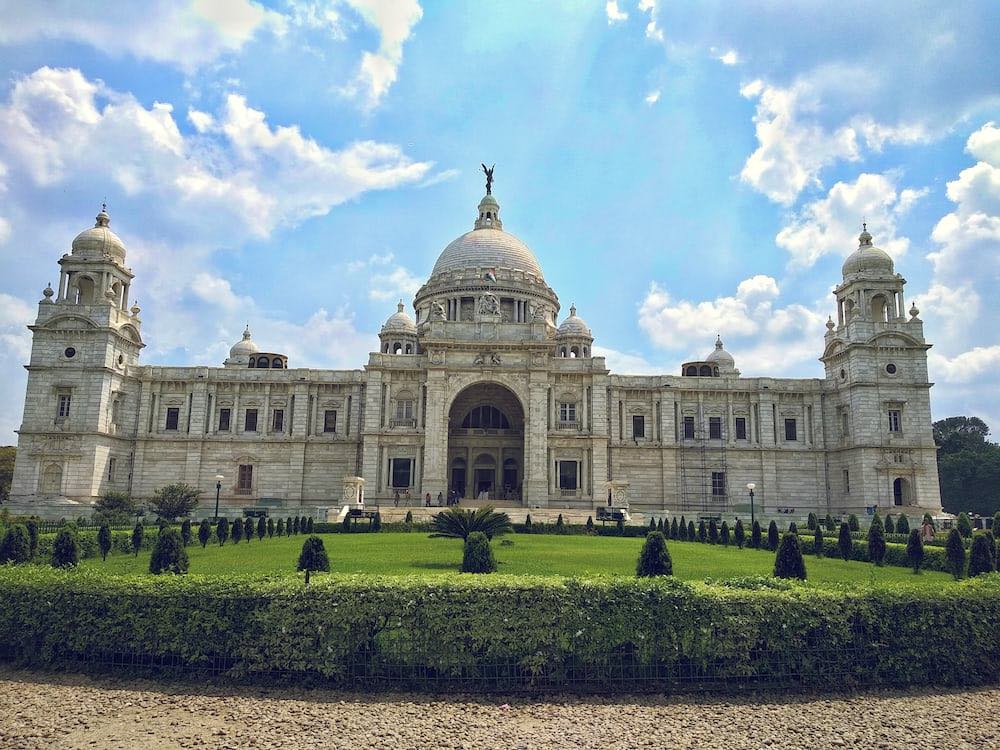
History and Background of Kolkata
Kolkata’s history dates back to the late 17th century when it was a modest village on the eastern banks of the Hooghly River. The arrival of the British East India Company in 1690 marked a turning point for the city. Under British rule, Kolkata rapidly transformed into a significant trading port and became the capital of British India in 1772. The city’s strategic location and proximity to the Ganges River made it an ideal center for colonial administration and trade. Kolkata emerged as a hub of intellectual and cultural renaissance during the 19th and early 20th centuries. The Bengal Renaissance brought about a surge in literary, artistic, and social reforms, propelling Kolkata into the forefront of intellectual discourse in the country.
Kolkata became a hotbed for nationalist movements against British colonial rule. It hosted pivotal events like the Swadeshi Movement, the Non-Cooperation Movement, and the Quit India Movement. The then capital city was a hub of various socio-religious movements such as Brahmo Samaj, the Young Bengal Movement and the Ramakrishna Mission. Even after the transfer of the capital to Delhi, Kolkata remained a major hub for trade and independence struggle. Kolkata was the center for political, cultural, and intellectual activities that laid the foundation for modern India.
The post-independence years brought significant challenges to Kolkata. The partition of India in 1947 resulted in the mass migration of people, with Kolkata absorbing a large influx of refugees from East Pakistan (now Bangladesh). The sudden increase in population strained the city’s resources and infrastructure, leading to socio-economic problems and overcrowding.
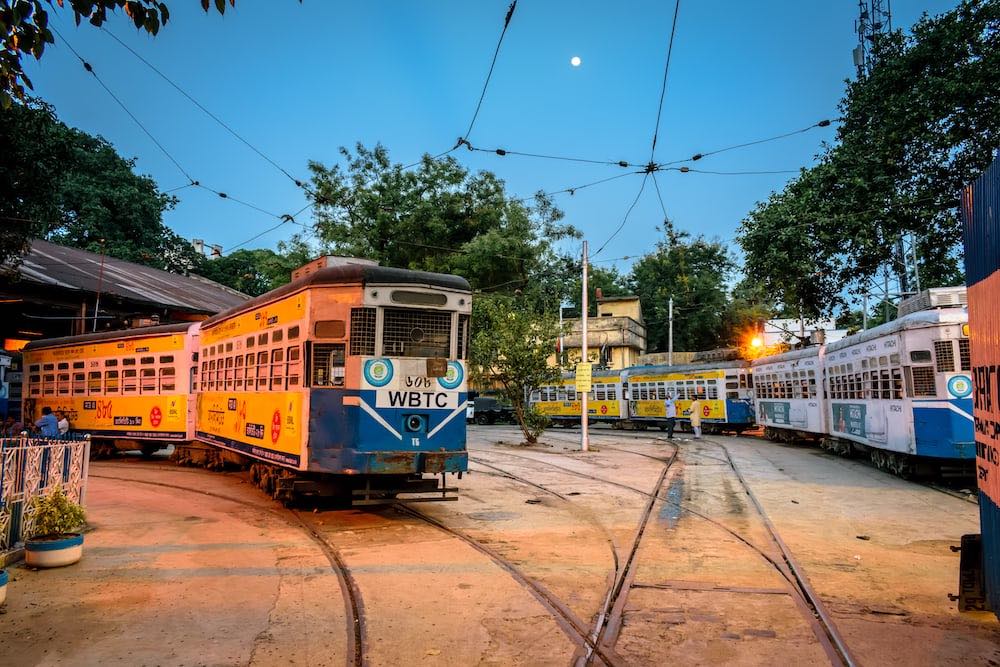
Kolkata in 1960 - 2000 and the IT Boom
In the 1960s and 1970s, Kolkata experienced a series of challenges, including severe power shortages, labor strikes, and the rise of the Marxist-Maoist movement known as the Naxalites. These issues had a detrimental impact on the city’s infrastructure and led to economic stagnation. Additionally, the nationalization of industries in the 1970s had a detrimental impact on Kolkata’s economy. The once-thriving industrial sector experienced a decline, leading to job losses and a subsequent brain drain. Frequent strikes and violent clashes hindered the city’s progress, driving away potential investors and impacting its overall growth.
Furthermore, the Bangladesh Liberation War in 1971 triggered a massive influx of refugees into Kolkata, many of whom arrived with limited financial resources, straining the city’s infrastructure.
In 1985, Prime Minister Rajiv Gandhi famously referred to Kolkata as a “dying city” due to its socio-political woes. From 1977 to 2011, the Left Front, largely governed by the Communist Party of India (CPM), ruled West Bengal from Kolkata, making it the world’s longest-serving democratically elected communist government. However, the 2011 West Bengal Legislative Assembly election saw the defeat of the Left Front by the Trinamool Congress. Starting in the 1990s, India’s pro-market reforms spurred Kolkata’s economic recovery, with notable growth in the information technology services sector and manufacturing base since the early 2000s.
The decline in Kolkata’s fortunes was further exacerbated by political instability and labor unrest during the 1970s and 1980s.
The IT sector’s rise in Kolkata can be traced back to the late 1990s when the Indian government initiated economic reforms that promoted foreign investments and encouraged the growth of the IT industry. With the availability of skilled workforce, cost-effective resources, and a conducive business environment, Kolkata became an attractive destination for IT companies to set up their operations.The government of West Bengal introduced various policies and incentives to encourage investments in the region, providing tax benefits, subsidies, and infrastructure support to IT companies. The establishment of IT parks and Special Economic Zones (SEZs) in and around Kolkata, including Newtown, further fueled the growth of the IT sector in the city. Newtown began to witness significant development in the early 2000s. The availability of vast land parcels and the government’s focus on developing infrastructure in the area contributed to its transformation into a technology hub. IT giants and start-ups alike began to establish their offices in Newtown, attracted by the modern infrastructure, connectivity, and ease of doing business. The growth of the IT sector in Newtown brought forth numerous job opportunities for the local population, as well as individuals from neighboring states. The demand for skilled professionals in areas such as software development, data analytics, cybersecurity, and digital marketing increased exponentially. This resulted in a significant influx of talent into the region, further propelling its growth.

As the IT sector flourished in Newtown, there was a subsequent surge in real estate development. The construction of modern office spaces, shopping complexes, and residential apartments led to a transformation of the Newtown skyline. Transportation networks were strengthened, new roads were constructed, and public amenities like schools, hospitals, and recreational facilities were developed. This not only enhanced the quality of life for the residents but also made Newtown an attractive destination for IT companies looking to establish a base in the region. As an IT hub, Newtown has not only created a thriving business ecosystem but has also transformed the socio-economic landscape of Kolkata, making it a significant player in India’s IT industry.
Kolkata has shown resilience and undertaken efforts for revitalization. The city has witnessed urban development initiatives, including the restoration of historic buildings, the creation of new infrastructure, and the improvement of public transportation. Kolkata built the first metro station in 1984, connecting Bhawanipore to Esplanade. As of January 2023 it has three operational lines: a 31.36 km line from Dakshineswar to Kavi Subhash, a 9.1 km line from Salt Lake Sector V to Sealdah, and a 6.5 km line from Joka to Taratala, for a total of 46.96 km. Three other lines are in various phases of construction. Kolkata’s tram system, established in 1873, holds the distinction of being the oldest existing tram line across the entire Asian continent. Its inauguration marked a historic moment as the first horse-drawn tramway service in Asia. Over the years, Kolkata’s tram network evolved into an electric tram system, yet it retained its historical charm.
Several initiatives are being carried throughout the City of Joy ranging from modernized automated garbage vats to beautiful underpasses. Kolkata, now, has emerged as a clean and green city, providing opportunities for immense residential and commercial development. Today, Kolkata is a modern city with tall skyscrapers such as the famous The 42, expansive flyovers, malls, amusement parks and nationally recognized educational centers.
Culture of Kolkata
The cultural vibrancy that Kolkata is renowned for remains alive, with art, literature, and theater continues to thrive. Art remains the main backbone of the city of joy.
The poetic heritage of Kolkata can be traced to Rabindranath Tagore, who revolutionized Bengali literature and brought it to the global stage with his enchanting poetry. Tagore’s works, including his timeless collection of poems known as “Gitanjali,” reflect the nuances of human emotions, nature’s beauty, and spiritual contemplations. His influence on the poetry scene of Kolkata cannot be overstated, and his legacy continues to inspire budding poets to this day. The city’s poetry has always mirrored the socio-political climate, reflecting the struggles and aspirations of its people. Poets like Kazi Nazrul Islam, fondly known as the “Bidrohi Kabi,” ( Revolutionary Poet) captured the spirit of freedom and revolution with their fiery verses during India’s struggle for independence. Nazrul’s poetic expression stirred the hearts of many and became a powerful instrument of resistance against oppression.
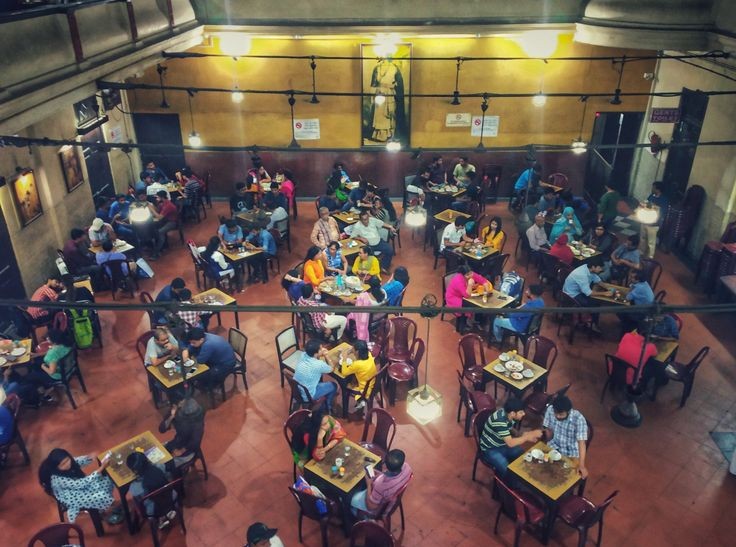
In the realm of contemporary music, rock and band genres made a late entry but eventually gained popularity. Moheener Ghoraguli, often considered the first Bengali rock band, led by Goutam Chattopadhyay, played a pivotal role in introducing this genre. Over time, bands like Cactus, Chandrabindoo, Bhoomi, and Fossils emerged, each with its distinct style and musical expression.
Kolkata has rightfully earned the title of India’s first city of books. The passion for literature is evident in the city’s renowned event, the ‘Kolkata Book Fair,’ which attracts over 2.5 million visitors annually. The literary contributions from Bengali authors have been unparalleled, with luminaries like Rabindranath Tagore, Ishwar Chandra Vidyasagar, Sarat Chandra Chattopadhyay, Kazi Nazrul Islam, and Bankim Chandra Chattopadhyay, among others, enriching Bengali literature. Satyajit Ray, the legendary filmmaker, hails from Kolkata, a city that became an inseparable part of his cinematic masterpieces. Kolkata’s rich cultural tapestry inspired Ray’s storytelling, leaving an indelible mark on the world of cinema.
One of the most cherished traditions at Kolkata is “adda.” Adda is an integral part of Kolkata’s social life, and it refers to the informal and freewheeling conversations that take place among groups of people over cups of coffee or tea. These discussions can be on a wide range of topics, from literature, politics, and philosophy to everyday anecdotes and personal experiences. From young ages to old, “Chol adda marbi?”(Want to hangout?) is an evergreen phrase. It is just as much a part of Bengali culture as its rich music and poetry is.
Kolkata boasts a rich history and cultural heritage, reflected in its numerous famous monuments. One of the most iconic structures is the Victoria Memorial, a splendid white marble edifice built in memory of Queen Victoria, which blends Indo-Saracenic and British styles and stands amidst lush gardens, making it a popular spot for both tourists and locals alike. The Dakshineswar Kali Temple is a temple dedicated to Goddess Kali and showcases traditional Bengali temple architecture. The serene ambiance and the religious significance make it a sacred destination for pilgrims and spiritual seekers. A fusion of neoclassical and traditional Bengali styles, the Marble Palace was built in the 19th century and boasts an extensive collection of sculptures, paintings, and artifacts, making it a living testimony to the city’s opulent past. Last but not least, the Indian Museum, founded in 1814, is not only the oldest museum in India but also one of the most significant in Asia. Housing an extensive array of artifacts, artworks, and historical relics, it offers a captivating journey through India’s cultural and scientific heritage.
These architectural gems not only reflect the past glory of Kolkata but also play a pivotal role in shaping the collective identity and pride of Bengalis.
Kolkata simply cannot be Kolkata without Durga Puja. From intricate pandals housing artistic idols of Goddess Durga to the rhythmic beats of dhak and vibrant cultural performances, the city transforms into a spectacle of colors and joy. The festival is ingrained deeply in the hearts of Bengalis, transcending all boundaries of age, caste, or creed. It is a time when families come together, friends reunite, and people from all walks of life forget their worries and embrace the essence of unity and devotion. The devotion towards Durga Maa is not merely a ritual but a profound belief that the Goddess embodies the strength to conquer evil and protect her devotees. Months before the actual puja, preparations begin with meticulous planning and dedication. The artisans create stunning idols of the Goddess, and the pandals are meticulously designed, often depicting various themes and social issues. It is also a time when renowned artists, musicians, and performers grace the city, adding a touch of finesse to the celebrations.
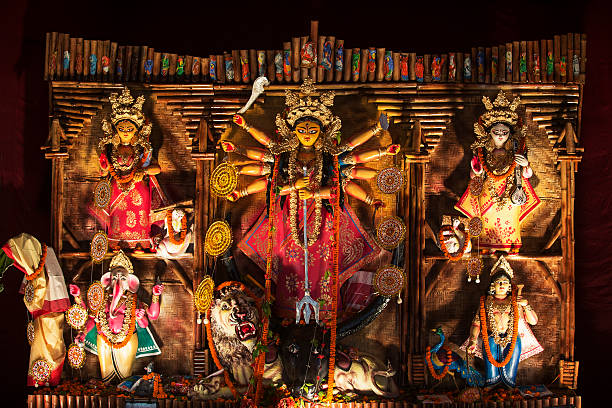
Where does Kolkata get its name from?
Kolkata owes its name to the unique history of the region. The city was originally known as “Kalikata,” derived from the name of the patron deity of the region, Goddess Kali. It was a small fishing village before the arrival of the British East India Company. The British later anglicized the name to “Calcutta,” which continued to be used until India gained independence in 1947. In 2001, the Government of India officially changed the city’s name to “Kolkata” to reflect its Bengali pronunciation. This renaming was not merely a linguistic shift but a reaffirmation of the city’s cultural identity, tying it back to its roots and acknowledging the strong bond between Kolkata and its beloved Goddess Durga. The deep-rooted belief in Durga Maa, the celebration of art and creativity, and the city’s name itself, all come together to form an inseparable tapestry that makes Kolkata the enchanting and unforgettable city that it is today.
The future of the City of Joy
Kolkata’s future is poised for a transformative journey, marked by a blend of opportunities and challenges. Its historical significance and cultural richness lay the foundation for a thriving urban center. To ensure sustained growth, the city must embrace economic diversification, nurturing industries like technology and innovation, which could stimulate job creation and drive progress. However, such development needs to be complemented by modern infrastructure, including efficient transportation networks and sustainable urban planning. According to Climate Central’s latest maps, based on IPCC’s 2021 report, Kolkata is expected to be underwater by 2030. Kolkata faces rising temperatures, erratic monsoons, and sea-level threats due to climate change. Urgent actions are needed for resilience, sustainable development, and protecting vulnerable communities. The future ahead of Kolkata ultimately lies in the hands of the youth and the government. Only time can tell if Kolkata will be able to live up to its charm and be able to compete with the other modernized cities of India.
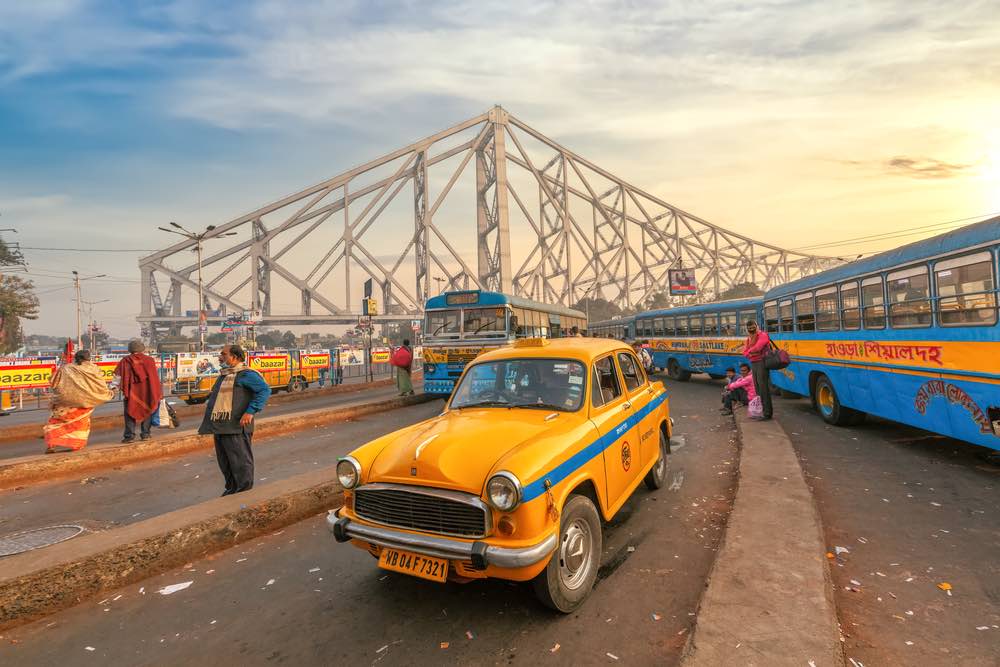
Kolkata as we love and know it today
As one wanders through the streets of Kolkata, they will encounter a harmonious blend of the old and the new, where colonial-era buildings stand alongside modern skyscrapers, and age-old traditions coexist with contemporary art and literature. The famous yellow ambassador taxis and also the latest modern cars of India can be seen running on the road. Kolkata’s history and culture has left an indelible mark not only on its residents but also on visitors who are drawn to the city’s magnetic charm. As the city continues to evolve and embrace the challenges of the 21st century, its history and culture remain the anchor that keeps it rooted in its essence. Kolkata stands as a living mosaic of traditions, diversity, resilience, and creativity, forever etched in the hearts of those who call it home and those who are fortunate enough to experience its magic.
“দেখি, কলিকাতা আছে কলিকাতাতেই॥”
(See, Kolkata is there in Kolkata only)
Kolkata has such an extraordinary culture and pace, which cannot be found anywhere else.
( The lines in bengali are taken from Ek Din Ami Shopno Dekhinu by Rabindranath Tagore)
Written by – Prithika Deb
Edited by – Mir Irfan Ali
